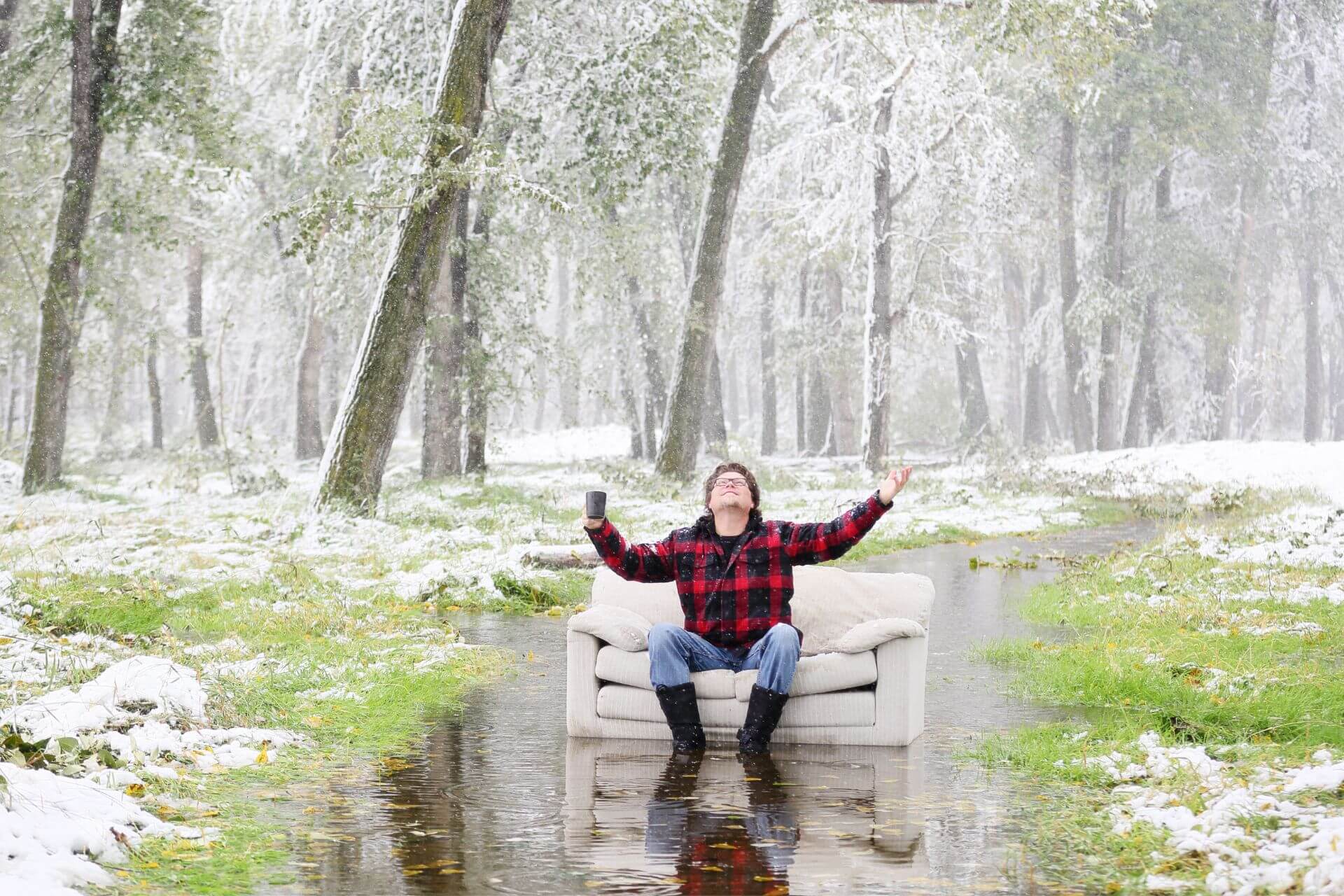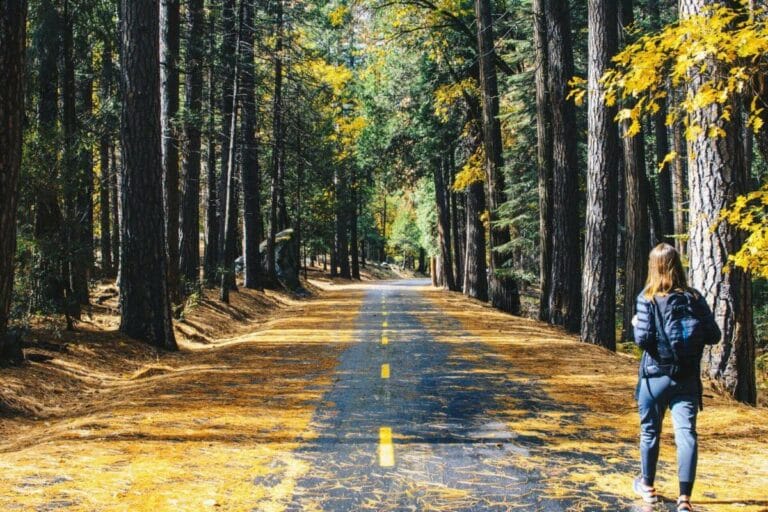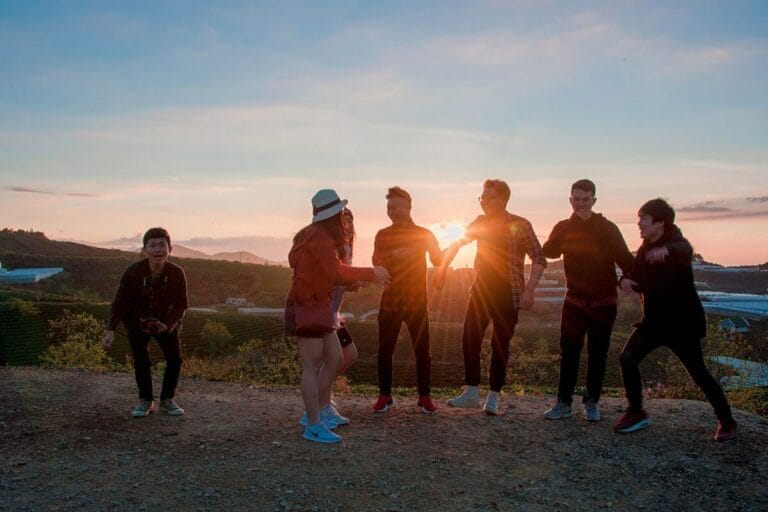An Amazing Guide for All Outdoor Enthusiasts
Are you an outdoor enthusiast looking for some amazing tips and tricks to get the most out of your adventures? Here’s your comprehensive guide! From learning the basics of wild camping to the essential safety rules you should keep in mind, this guide is full of advice and information that will help you make the most out of your outdoor experiences. Whether you’re a beginner eager to learn or an experienced camper in need of a refresher, this guide will have you covered. Read on to find out how to prepare for adventure, explore the great outdoors, and make the most of your outdoor experiences.
Exploring the Great Outdoors
Ah, the great outdoors! There’s nothing quite like it. Whether you want to take a peaceful stroll in nature or tackle more adventurous activities, being out in the elements can be an incredibly rewarding experience. But before you set off on your adventure, it pays to do some research and prepare properly.
Planning your adventure
If you are planning to undertake an activity, such as Kayaking, or climbing, as a beginner, we would always recommend that you link in with a specialist centre or instructors, going as part of a group is great fun, and also a chance to meet like-minded people. It is also the safest option, and in time you can progress your knowledge and skills. A centre will often have all the equipment you need on hand, so you don’t have to invest the first time. Once you have fallen in love with the activity and gained experience then is the time to start thinking about investing in your own gear.
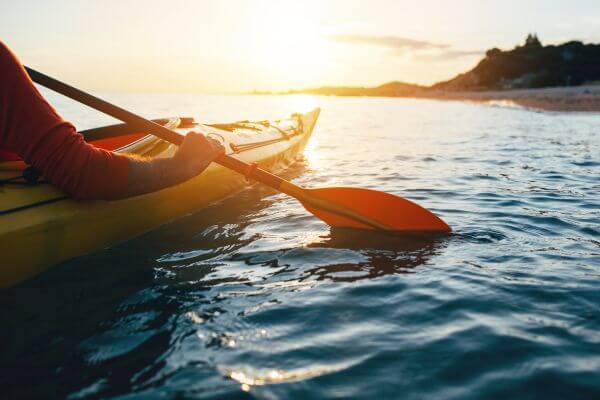
If your plan is to go for a hike, maybe camp out overnight, the specialist skills aren’t as crucial, but it is still important to plan ahead. Make sure you have everything with you to suit the time of the year, taking note of short or longer term weather forecasts which are readily available online, so you are prepared with clothing and good footwear.
Make sure, if the location isn’t known to you that you are also aware of the terrain, which will feed into your decisions on what you take with you. Even the great Sir Edmund Hillary would not have got where he did in Converse trainers!
Also it’s important to remember that you are human, and unlike Hannibal, tackling The Alps, you will not have a herd of elephants to carry your clothing and equipment, so make sure that whilst you have everything you need, you can comfortably carry it.
Don’t rely on your phone to guide you through an unknown location, as not everywhere has the best signal, however it is important that you invest maybe in a power bank for your phone as the great outdoors can be somewhat lacking in plug sockets and USBs, but seriously, even without signal, if something happens, your phone can be tracked without signal.
Here’s a list of handy equipment to take on a long hike or overnight camping:
- Backpack: Choose a backpack that fits comfortably and has enough space to hold all your gear.
- Tent: Look for a lightweight and durable tent that can withstand various weather conditions.
- Sleeping bag: Choose a sleeping bag that is appropriate for the climate you will be camping in.
- Sleeping pad: A sleeping pad can provide extra insulation and comfort while sleeping.
- Water filter: A water filter can be used to purify water from natural sources, making it safe to drink.
- Stove: A lightweight camping stove can be used to cook meals and boil water.
- Cookware: Bring lightweight pots, pans, and utensils for cooking.
- Headlamp or flashlight: A headlamp or flashlight is essential for navigating in the dark.
- Maps and compass: Always carry a map and compass for navigation, and know how to use them.
- First aid kit: A first aid kit should include essentials such as bandages, antiseptic, pain relievers, and insect repellent.
- If you are on prescription medication or you have allergies, or conditions such as Asthma, make sure you take any essential medication with you, and tell anyone with you where you have it packed.
- Multi-tool or knife: A multi-tool or knife can be useful for a variety of tasks, such as cutting rope or preparing food.
- Sun protection: Bring sunscreen, a hat, and sunglasses to protect yourself from the sun.
- Extra clothing: Pack extra layers of clothing, including rain gear, in case the weather changes.
- Emergency whistle: An emergency whistle can be used to signal for help if you get lost or injured.
- Water bottle or hydration system: Stay hydrated by bringing a water bottle or hydration system.
- Nutritious snacks and food.
Remember to pack light and only bring what you need to avoid carrying unnecessary weight. Always research the specific climate and terrain you will be hiking or camping in to ensure you have the appropriate gear.
Finding the Right Gear
If you are unsure of what types or brands of equipment and clothing would be best for your trip, the best advice we can give is to ask the right people. If you know an experienced, seasoned hiker or camper, or have a look at online reviews in specialist online communities, that way you can always ask questions too. There is always a range to suit every budget, but we would also suggest that you don’t just buy cheap for the sake of it, as you can end up buying twice that way.
Grasp Life Top Guide for All Outdoor Enthusiasts Buying Their Gear
- Determine your needs: Before you start shopping, make a list of the activities you plan to participate in and the specific gear you will need for those activities. Consider the climate, terrain, and duration of your trip.
- Do your research: Look up reviews, ratings, and specifications of the gear you are interested in purchasing. Read blogs and forums to get opinions and feedback from other outdoor enthusiasts.
- Consider the quality: High-quality gear may be more expensive upfront but can save you money in the long run by lasting longer and performing better. Look for durable materials, good construction, and reliable brands.
- Check for fit and comfort: It’s important that your gear fits you properly and is comfortable. Try on clothing and footwear before purchasing, and consider trying out equipment if possible.
- Look for versatility: Look for gear that can be used in multiple situations to save money and space in your pack.
- Consider weight: Especially if you’ll be backpacking, consider the weight of each piece of gear. Look for lightweight options that will not weigh you down.
- Ask for recommendations: Ask friends, family, and fellow outdoor enthusiasts for recommendations on gear they love and trust.
Remember that your gear should fit your personal preferences and needs. Don’t be afraid to ask questions and take your time to find the right gear for you.
Wild Camping Basics
Wild camping, also known as primitive camping or backcountry camping, refers to camping in remote areas without the amenities and facilities typically provided at designated campsites. Wild camping involves setting up camp in a natural setting, such as a forest, mountain, or beach, and practicing leave-no-trace principles to minimise impact on the environment.
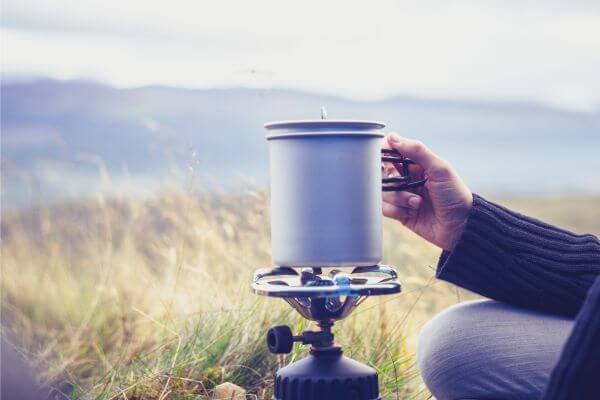
Here are some basic things to keep in mind when planning a wild camping trip:
- Check local regulations: Laws and regulations regarding wild camping vary depending on the location. Some areas may require permits, while others may not allow camping at all. It’s important to research the rules and regulations of the area before setting up camp.
- Pack appropriate gear: Since wild camping does not offer the same amenities as designated campsites, it’s important to bring appropriate gear to ensure your safety and comfort. This may include a sturdy tent, sleeping bag, water filter, cooking supplies, and food.
- Practice leave-no-trace principles: When camping in a natural environment, it’s important to leave the area as you found it. This means packing out all trash and minimizing impact on the environment.
- Respect wildlife: When camping in remote areas, it’s important to respect the wildlife and their habitats. This means storing food properly and avoiding any activities that may disturb or harm the local wildlife.
- Be prepared for emergencies: In the event of an emergency, it may take longer for help to arrive in remote areas. It’s important to bring appropriate safety gear, such as a first aid kit and emergency communication device, and to know how to use them.
Hiking Tips for Beginners
If you’re new to hiking, there are a few things you should keep in mind to ensure a safe and enjoyable experience. Here are some hiking tips for beginners:
- Start small: Begin with short, easy hikes and gradually work your way up to longer, more challenging ones. This will help you build endurance and confidence.
- Choose the right trail: Select a trail that matches your fitness level and experience. Consider the distance, elevation gain, and terrain.
- Wear appropriate clothing and footwear: Dress in layers and wear comfortable, sturdy footwear that provides good traction. Avoid cotton clothing as it holds moisture and can lead to hypothermia.
- Bring plenty of water and snacks: Stay hydrated by drinking plenty of water and bring high-energy snacks to keep you fueled.
- Know your limits: Don’t push yourself too hard and take breaks as needed. Listen to your body and turn back if you start to feel tired or uncomfortable.
- Pack essential items: Bring a map, compass, and first aid kit, and know how to use them. It’s also a good idea to bring sunscreen, insect repellent, and a hat.
- Leave no trace: Follow the principles of leave no trace and pack out all trash. Leave the trail and the environment as you found it.
- Hike with a friend: It’s always a good idea to hike with a partner or a group for safety and support.
Remember to always check the weather forecast and trail conditions before heading out, and let someone know your planned route and expected return time. With these tips in mind, you’ll be well on your way to enjoying the great outdoors through hiking!
Essential Outdoor Safety Rules
Hiking and camping can be great ways to enjoy the outdoors and explore nature, but it’s important to prioritize safety. Here are some essential safety rules for hiking and camping:
- Plan ahead: Research the trail or camping area ahead of time, including weather conditions, potential hazards, and any necessary permits. Let someone know your itinerary and expected return time.
- Stay on the trail: Stick to designated trails to avoid getting lost or damaging fragile ecosystems.
- Dress appropriately: Wear appropriate clothing and footwear for the weather and terrain. Dress in layers and bring rain gear if necessary.
- Bring plenty of water and snacks: Stay hydrated by drinking plenty of water and bring high-energy snacks to keep you fueled.
- Be aware of wildlife: Learn about the local wildlife and how to avoid encounters. Store food properly and avoid feeding animals.
- Carry essential gear: Bring a map and compass or GPS, a first aid kit, a headlamp or flashlight, a whistle, and a multi-tool.
- Set up camp in designated areas: Follow established guidelines for setting up camp, including pitching your tent in designated areas and using established fire rings.
- Practice leave no trace: Pack out all trash and leave the environment as you found it. Don’t disturb wildlife or plant life.
- Respect fire safety: Check fire restrictions and regulations before starting a fire. Use established fire rings and never leave a fire unattended.
- Know your limits: Stay within your physical and skill level. Turn back if you start to feel tired, sick, or uncomfortable.
Remember, safety should always be a priority when hiking and camping. By following these essential safety rules, you can ensure a fun and safe outdoor experience.
Outdoor Survival Knowledge
Outdoor survival knowledge is essential for anyone who spends time in the wilderness. Here are some basic survival tips and skills to help you in case of an emergency:
- Shelter: In case of inclement weather, you’ll need a shelter to protect yourself from the elements. Learn how to build a shelter using natural materials, such as branches, leaves, and rocks.
- Fire: Fire is essential for warmth, cooking, and signaling for help. Learn how to build a fire using a variety of methods, including flint and steel, matches, or a magnifying glass.
- Water: Water is critical for survival, and it’s important to know how to find and purify water in the wilderness. Learn how to collect and purify water using natural methods, such as boiling, filtering, and using iodine tablets.
- Food: Knowing how to find food in the wilderness can be a lifesaver in a survival situation. Learn how to identify edible plants and insects, and how to fish and hunt for food.
- Navigation: Being able to navigate in the wilderness is essential for finding your way to safety. Learn how to use a map and compass, as well as other navigation tools like the stars, sun, and natural landmarks.
- First Aid: Accidents and injuries can happen in the wilderness, so it’s important to know basic first aid skills. Learn how to treat cuts, burns, fractures, and other common injuries, as well as how to improvise medical supplies if necessary.
- Signaling: In case of an emergency, it’s important to know how to signal for help. Learn how to use signal mirrors, whistles, and smoke signals to attract attention.
Remember, the key to survival in the wilderness is preparation and knowledge. By learning and practicing these basic survival skills, you’ll be better equipped to handle any unexpected situation that may arise.
Winter Camping Equipment
Winter camping can be an exhilarating and rewarding experience – if you’re properly prepared! If you’re planning on taking a trip out to the great outdoors in the wintertime, here are some tips and suggestions for winter camping:
- Dress in layers: The key to staying warm in the winter is to dress in layers. Start with a base layer that wicks moisture away from your skin, add a middle layer for insulation, and finish with an outer layer that is windproof and waterproof.
- Bring a warm sleeping bag: Choose a sleeping bag that is rated for the lowest temperature you expect to encounter. Additionally, consider using a sleeping pad or an insulated air mattress to keep you off the cold ground.
- Pack warm, high-energy food: Winter camping requires more energy than summer camping, so pack plenty of high-energy snacks like nuts, cheese, and dried fruit. Warm drinks like tea and hot chocolate can also help keep you warm.
- Bring proper winter camping gear: In addition to warm clothing and a sleeping bag, make sure you have a winter tent, a stove, fuel, and a cook pot. You will also need a good quality winter sleeping pad, snowshoes or skis if necessary, and plenty of warm socks and gloves.
- Stay hydrated: It can be easy to forget to drink enough water when it’s cold outside, but it’s important to stay hydrated. Bring a water bottle or hydration system that won’t freeze, and consider bringing a thermos for warm drinks.
- Know the weather forecast: Be sure to check the weather forecast before you go and plan accordingly. If there’s a chance of snow, bring a snow shovel to clear your campsite and a warm hat and gloves to protect yourself from the cold.
- Be prepared for emergencies: Winter weather can be unpredictable, so it’s important to be prepared for emergencies. Pack a first aid kit, a map and compass, and a signal whistle. Let someone know where you are going and when you plan to return.
Backpacking Essentials
Backpacking can be an exciting and rewarding way to explore the great outdoors. Here are some essential pieces of information to keep in mind before you head out on your backpacking adventure:
- Know your route: Research the trail and surrounding areas before you go, and have a good understanding of the terrain, weather, and any potential hazards.
- Pack light: Your backpack should be no more than 25-30% of your body weight. Only bring what you need and leave unnecessary items at home.
- Choose the right gear: Invest in good-quality backpacking gear, including a sturdy tent, sleeping bag, and backpack. Choose clothing that is appropriate for the weather and terrain.
- Follow Leave No Trace principles: Practice Leave No Trace principles, including packing out all trash and leaving the environment as you found it.
- Purify water: Bring a water purification system or know how to purify water in the backcountry using natural methods.
- Know basic first aid: Learn basic first aid skills and bring a first aid kit with you on your trip.
- Check for permits: Some backpacking areas require permits, so be sure to check before you go and obtain any necessary permits.
- Know your limitations: Be honest with yourself about your physical abilities and don’t push yourself too hard. Take breaks as needed and know when to turn back.
- Practice safety: Be aware of wildlife and practice bear safety if you’re in bear country. Store food properly and keep a clean campsite to avoid attracting animals.
- Stay on the trail: Stay on designated trails to avoid getting lost and damaging fragile ecosystems.
By following these essential pieces of information, you’ll be well-prepared for your backpacking trip and able to enjoy the great outdoors with confidence.
What to Pack for a Long Hiking or Camping Trip
Packing for a long hiking or camping trip requires careful consideration of what you’ll need to be comfortable, safe, and self-sufficient in the wilderness. Here are some essentials to pack:
- Backpack: A sturdy, comfortable backpack is essential for carrying all your gear and supplies.
- Tent: Choose a lightweight, waterproof tent that’s appropriate for the size of your group.
- Sleeping bag: Choose a sleeping bag that’s appropriate for the weather and temperature.
- Sleeping pad: A sleeping pad provides insulation and cushioning for a more comfortable night’s sleep.
- Clothing: Bring clothing appropriate for the weather and terrain, including hiking boots, a hat, sunglasses, rain gear, and warm layers.
- Food and cooking supplies: Bring enough food for your entire trip, along with a camping stove, fuel, pots, and utensils.
- Water and purification system: Bring enough water for your trip or a way to purify water from streams or lakes.
- Navigation tools: Bring a map and compass or GPS device to navigate the wilderness.
- First aid kit: Bring a first aid kit with basic supplies to treat minor injuries.
- Personal hygiene items: Bring items like toilet paper, hand sanitizer, and a trowel for digging catholes.
- Lighting: Bring a headlamp or flashlight with extra batteries.
- Emergency supplies: Bring a whistle, emergency blanket, and extra food and water in case of emergency.
Remember to pack only what you need and keep your pack as light as possible. By packing these essentials, you’ll be prepared for a comfortable and safe hiking or camping trip.
Happy Outdoorsing!
We hope this guide has been a helpful one-stop shop for your outdoor adventure essential questions. Whether you’re a beginner ready to explore the great outdoors or an experienced camper looking for a refresher, this guide should have provided you with the knowledge and advice necessary to enjoy your outdoor adventures safely and effectively. So get out there, explore nature, stay safe, and have fun!

